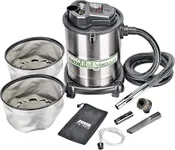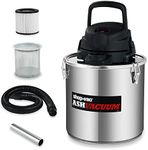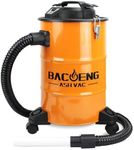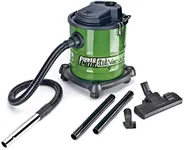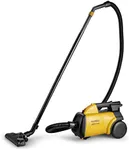Buying Guide for the Best Ash Vacuums For Fireplaces
Choosing the right ash vacuum for your fireplace is essential to ensure efficient and safe cleaning. Ash vacuums are specifically designed to handle the fine particles and high temperatures associated with ash, making them a better choice than regular household vacuums. When selecting an ash vacuum, consider the following key specifications to find the best fit for your needs.CapacityCapacity refers to the amount of ash the vacuum can hold before it needs to be emptied. This is important because a larger capacity means you can clean more ash in one go without frequent emptying. Capacities typically range from 2 to 5 gallons. If you have a large fireplace or use it frequently, a larger capacity (4-5 gallons) would be more convenient. For smaller fireplaces or less frequent use, a smaller capacity (2-3 gallons) should suffice.
Filtration SystemThe filtration system is crucial for trapping fine ash particles and preventing them from being released back into the air. A good filtration system ensures cleaner air and protects the vacuum's motor. Look for vacuums with HEPA filters, as they are highly effective at capturing tiny particles. Some vacuums also have dual filtration systems for added protection. If you or anyone in your household has allergies or respiratory issues, a vacuum with a high-quality filtration system is essential.
Hose LengthHose length determines how easily you can maneuver the vacuum around your fireplace. A longer hose allows for greater reach and flexibility, making it easier to clean hard-to-reach areas. Hose lengths typically range from 3 to 10 feet. If your fireplace is large or has multiple sections, a longer hose (6-10 feet) will be more practical. For smaller fireplaces, a shorter hose (3-5 feet) should be adequate.
Suction PowerSuction power indicates how effectively the vacuum can pick up ash. Higher suction power means more efficient cleaning. Suction power is usually measured in watts or air watts. For heavy-duty cleaning, look for vacuums with higher suction power (over 1000 watts). For lighter, occasional cleaning, a vacuum with moderate suction power (600-1000 watts) should be sufficient.
Heat ResistanceHeat resistance is a critical feature for ash vacuums, as they need to handle hot ash without damage. This is typically achieved through heat-resistant materials and components. Ensure the vacuum you choose is specifically designed for ash and can handle temperatures up to 140°F (60°C) or higher. If you often clean warm ash, prioritize vacuums with higher heat resistance.
Ease of CleaningEase of cleaning refers to how simple it is to empty the ash and maintain the vacuum. Look for features like detachable canisters, washable filters, and easy-access compartments. These features make the cleaning process quicker and more convenient. If you prefer low-maintenance appliances, choose a vacuum with user-friendly cleaning features.
Noise LevelNoise level indicates how loud the vacuum is during operation. Lower noise levels are more comfortable for indoor use. Noise levels are measured in decibels (dB). For a quieter experience, look for vacuums with noise levels below 70 dB. If noise is not a major concern for you, this specification may be less critical.
